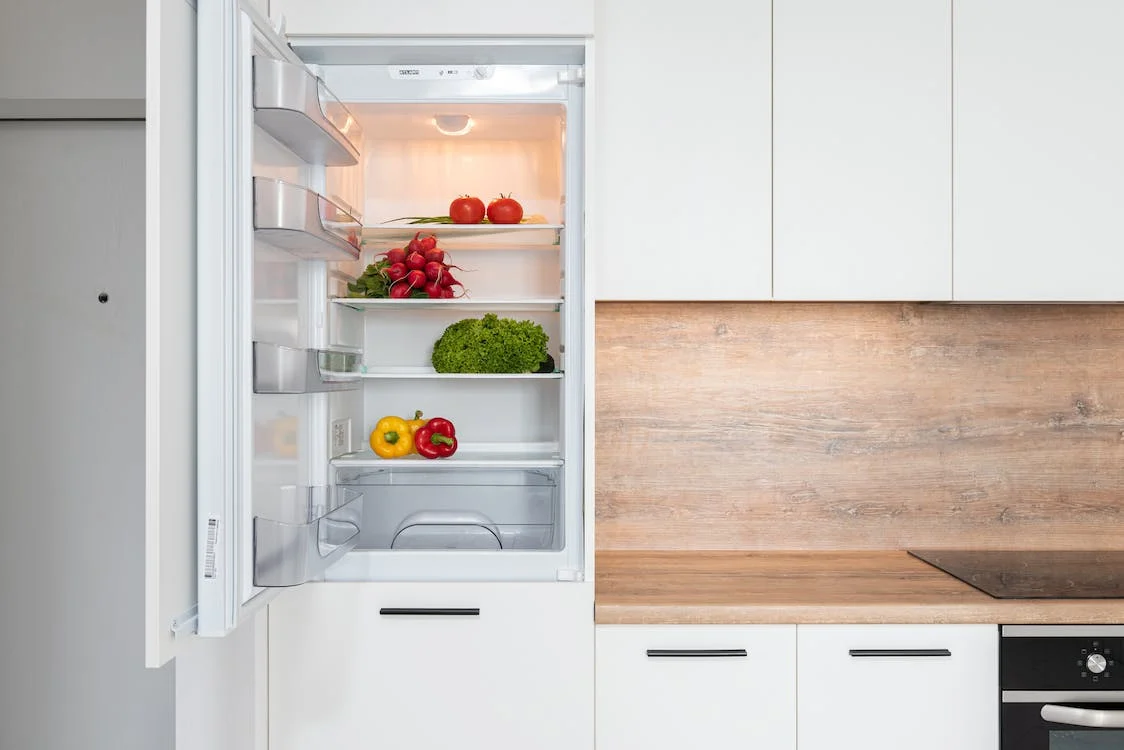Cool Cuisine Conservation: Strategies for Successful Cold Food Preservation
When you think of preserving food, what comes to mind? Jars of homemade jam? Dried fruit? Perhaps a pantry stocked with canned goods?
While all of these are valid methods of preservation, there’s one method that’s ubiquitous, easy, and remarkably effective, yet often overlooked: cold storage.
Whether you’re a culinary professional looking for ways to enhance your food preservation practices, or a home cook trying to make the most out of your groceries, cold storage is a valuable tool for ensuring that the food you buy, grow, or make lasts as long as possible. If you’re looking to get started with cold storage or learn more about how it works, this guide is for you.
From the explanation behind why cold storage is crucial, to nifty tips and strategies for successful cold food preservation, you’ll learn everything you need to know to master this ancient art. So, what is cold food preservation?
What is Cool Storage for Food Preservation?
Cool storage is one of the most common and effective forms of food preservation solutions. Think of it as your personal time capsule for food, slowing down the biological and chemical reactions that can cause your food to spoil.
When we talk about cool storage for food preservation, we’re essentially referring to the use of low temperatures to slow down the decay process. It’s all about creating an environment that is inhospitable for the microbes and enzymes that are usually responsible for food spoilage.
As you’ve probably guessed, your refrigerator and freezer play key roles here. They act as a shield, preserving your food from the invisible armies of bacteria, yeast, and mold. Your fruits, veggies, dairy products, and even yesterday’s leftovers owe their longevity to this amazing process.
Why is Cold Food Preservation Crucial for Food Safety and Quality?
Now, you might be asking, why is cold food preservation so important? What makes it a necessity in modern households and businesses alike? Here’s why:
Hinders Bacterial Growth
One of the key benefits of cold food preservation is that it hinders bacterial growth. Bacteria are like the villains in the story of food preservation. They can multiply rapidly at room temperature, causing food to go bad. However, cool storage environments act like a fortress, slowing down this bacterial invasion and extending the shelf life of food.
Preserves Nutrient Content
Another important factor to consider is the preservation of nutrient content. Freezing and refrigeration can help retain the vitamins and minerals in food that our bodies need. So, while you’re enjoying that chilled fruit salad, you’re also getting a healthy dose of essential nutrients.
Keeps Taste Intact
We all want our food to taste good, right? Cold storage is a hero in this regard, preserving the delicious flavors of your food. By slowing down spoilage, cold food preservation ensures your meals remain as tasty as when they were first prepared or bought.
Prevents Foodborne Illnesses
Picture enjoying a meal only to find yourself feeling unwell hours later. Foodborne illnesses are often due to improper storage conditions. Cold storage reduces the risk of foodborne illnesses by creating an environment where harmful bacteria struggle to survive.
Ensures Food Availability
By using cold storage, we can enjoy a wider variety of foods all year round, irrespective of seasonal variations. Your favorite berries might be out of season, but thanks to cold food preservation, you can enjoy them whenever you want.
Reduces Food Waste
Did you know that globally, a third of all food produced is wasted? Cold food preservation helps reduce food waste by extending the lifespan of your food. It’s an easy and effective way to become a part of the solution to the global food waste problem.
Safeguards Food Integrity
Cold storage ensures that the texture and color of your food remain appealing. No one wants to eat food that looks or feels off, and cool storage works diligently to maintain the integrity of your food.
Facilitates Safe Transport
From farm to table, food undergoes a long journey. Cold storage plays an essential role in facilitating safe transport, keeping perishable food in good condition.
Regulates Ripening Process
Fruit too ripe too soon? Cold storage can help regulate the ripening process. Placing fruits in cool storage slows down the ripening process, allowing you to enjoy your produce at your own pace.
Enhances Business Efficiency
For businesses, especially in the food industry, cold food preservation is critical for maintaining product quality, minimizing waste, and ultimately, ensuring customer satisfaction.
As you can see, cold food preservation plays an enormous role in maintaining food safety and quality. It’s not just about keeping your food cold; it’s about ensuring the food we eat is safe, tasty, and nutritious.
What are some tips and strategies for successful cold food preservation?
Alright, now that you know why cold food preservation is such a big deal, let’s dive into some strategies and tips that you can start applying right now.
Properly Pack Your Food
Proper packaging—it’s the first rule of the game. Inefficient or improper packaging is a silent enemy that can compromise your food preservation efforts. How so, you ask?
Imagine you’ve just cooked a delightful meal. You’re ready to store the leftovers for another day. You pop them into a container with a loose lid or wrap them in a cling film with holes.
Well, that’s a red flag. Poor packaging can expose your food to the air, leading to oxidation and spoilage. Always opt for airtight containers and high-quality wraps to ensure your food stays fresh for longer.
Organize by Date and Content
Now, think about your refrigerator or freezer. Is it a mysterious labyrinth where foods go in and only come out when they’ve become unrecognizable frozen fossils? If yes, it’s time to organize by date and content.
Label your containers with the date and what’s inside. Keep the oldest foods at the front, so they’re the first thing you see. Trust me, you’ll appreciate this when you’re hungry and searching for something to eat. It helps in reducing waste and ensures that you consume food while it’s still good.
Practice First-In-First-Out (FIFO)
Think about it this way: you’re at a bakery, and there’s a tray of fresh croissants. Would you grab the one from the back, or would you take the one right in front of you? The front one, right? That’s FIFO in a nutshell. Always use the oldest items in your fridge or freezer first. This practice reduces waste and keeps your food rotation efficient.
Store Foods at the Correct Temperature
Cold storage isn’t just about tossing your food into the fridge or freezer. It’s also about storing foods at the correct temperature.
Did you know each type of food has its ideal storage temperature? For example, your fridge should be at or below 4°C (40°F), while your freezer should be at -18°C (0°F). This ensures your food stays out of the “danger zone”—the temperature range where bacteria can multiply rapidly. So, always make sure your refrigerator and freezer are set at the correct temperature.
Prevent Cross-Contamination
Here’s a tip that can help keep you safe from food-borne illnesses: Avoid cross-contamination. This happens when bacteria or other microorganisms get transferred between two objects—often through touching them with your hands.
Ever noticed how supermarkets separate raw meat from vegetables? That’s because raw meat can have bacteria that can contaminate other foods. Always keep raw foods separate from cooked foods. And remember, clean your hands, utensils, and cutting boards after dealing with raw meat, seafood, and poultry.
Opt for Proper Portioning
Have you ever found yourself trying to defrost a large batch of soup, only to realize you just wanted a bowl or two? That’s where the magic of proper portioning comes in.
Freezing or refrigerating your food in meal-sized portions not only helps in easy retrieval and quick defrosting but also reduces waste. The next time you’re storing leftovers or preparing make-ahead meals, consider storing them in portions. That way, you take out only what you need, keeping the rest safe and fresh in the cold.
Cool Foods Before Freezing
Hot foods can increase the overall temperature of your freezer, forcing it to work overtime to get back to its ideal temperature. This can potentially affect the other foods already in the freezer. Cooling your food before freezing helps maintain the right freezer environment and also prevents excessive ice crystal formation on your food. So, next time, allow your food to cool completely before you send it off to the frozen wonderland.
Blanch Veggies Before Freezing
Blanching involves briefly boiling vegetables and then quickly plunging them into ice-cold water. It may sound like an extra step, but it’s definitely worth it. It helps retain the color, texture, and nutritional value of your veggies in the freezer. Plus, it curbs the enzymes that can cause spoilage. So, when you pull out those vibrant green peas in the heart of winter, you’ll be glad you took the time to blanch.
Avoid Overpacking the Freezer
Your freezer might feel like a magical bottomless pit, but there’s a limit to what it can hold efficiently.
Cramming your freezer full of food restricts proper air circulation, causing it to work harder to maintain its temperature. This can potentially lead to higher energy consumption and an uneven freeze. Instead, aim to keep your freezer about 75% to 80% full for optimal performance. Your freezer (and energy bill) will thank you.
Use Freezer-Safe Materials Only
If you’re freezing food, be sure to use only freezer-safe materials. Some plastics can crack or break at low temperatures, or even leach harmful chemicals into your food. That’s where mylar bags for food storage come in.
Mylar bags are safe for freezer use, and they can protect your food from moisture and oxygen, two of the main culprits behind freezer burn. They’re durable and resist punctures and tears, ensuring your food stays safely preserved.
Conclusion
By understanding the importance of cold food preservation and the strategies to do it effectively, you’re now equipped with the knowledge to maintain your food’s safety, quality, and freshness.
Cold food preservation is more than just a tactic; it’s a lifestyle change that champions food safety and minimizes waste. It’s not only about enjoying tasty meals but also ensuring the well-being of you and your loved ones.
So, the next time you put away your groceries or pack away those dinner leftovers, you’ll know you’re not just storing food, but preserving quality, preventing waste, and promoting health and safety.
Embrace these cool food preservation solutions and embark on your journey towards smarter, safer, and more sustainable food storage. After all, who knew something as simple as cold could be so cool?




